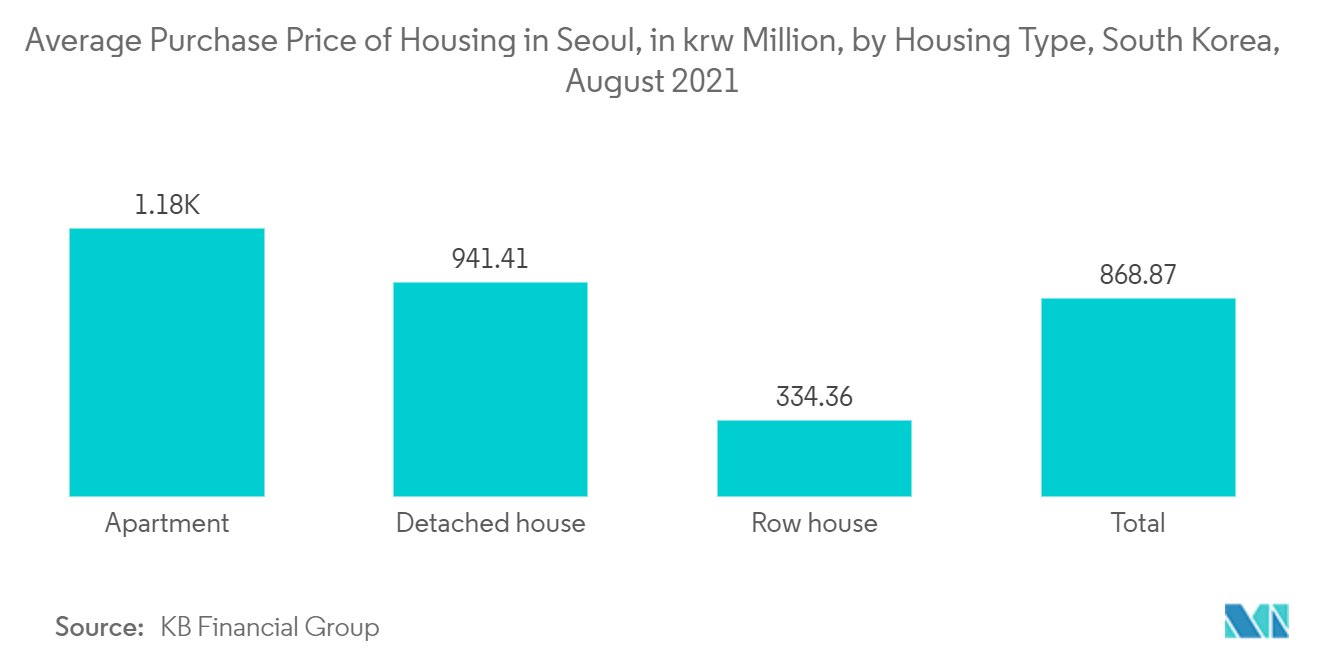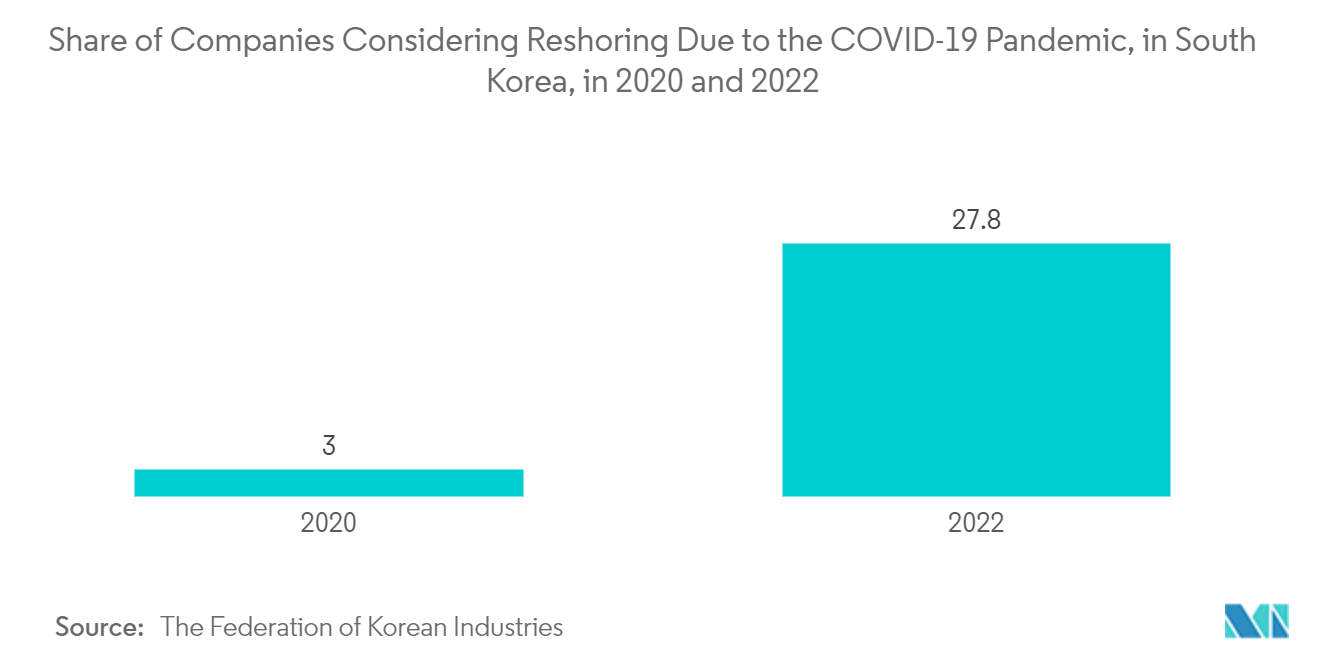Market Trends of South Korea Self-Storage Industry
This section covers the major market trends shaping the South Korea Self-Storage Market according to our research experts:
Personal Segment is Expected to Drive the Market Growth
- Personal storage includes household goods, out-of-season clothing, suitcases, bicycles, toys, photo albums, furniture, and so on. The need for self-storage facilities in South Korea is anticipated to remain strong in the upcoming years due to the city's vast population and severely constrained living quarters, etc. As a result, the market receives the business strategy and occupancy rate well.
- Space remains the major reason in South Korea for the transfer of household items to self-storage facilities. An increasing number of customers are resorting to self-storage facilities better to manage the space available in their businesses and homes as space in some of Korea's largest cities becomes ever more constrained.
- The urban population of South Korea regularly uses self-storage facilities as a result of their increased mobility and the rising cost of housing in urban areas with smaller areas for free-range movement. In keeping with this, the constantly growing Korean population is facilitating the need for more storage as families grow and accumulate more material goods, hence promoting market expansion.
- Self-storage facilities could be an option given the lack of residential space alternatives when enough domestic storage space is not readily accessible and could be a cost-saving choice for people who are hesitant to move to larger homes. For instance, ski enthusiasts who do not have enough space to store their equipment off-season can rent self-storage space. The same goes for other sports like golf, horse riding, etc., making self-storage popular among the local public in South Korea.
- Flexible timings and contracts, electronics access, ease of access and convenience, upfront discounts, referrals, and high-end services like temperature and humidity-controlled lockers and storage provided by the companies also attract the daily customers to easily store their belongings and get back whenever they need it. Therefore, the technological advantage and security offered by the vendors are also seen as a major contribution to the growth of the market in personal consumer space in the region.

Changing Business Practices and COVID-19 Consumer Behavior
- Due to lockdowns, travel restrictions, and business closures, COVID-19 has had an impact on the businesses and industries of numerous nations. The closing of numerous plants and factories has had a detrimental influence on the production, delivery schedules, and sales of goods on the international market. Business warned of potential delivery delays and eventual sales declines.
- Additionally, the chances for commercial relationships and collaborations are being impacted by the international travel bans implemented by nations in Europe, Asia Pacific, and North America. It is observed that in South Korea, the pandemic has had both driving and minor negating impacts on the overall self-storage market.
- Tourists are one of the users of the self-storage industry. Tourists usually prefer storing their access goods, such as shopping and collectible items, in short-duration storage boxes, before bulk shipping them to their native countries in order to save shipping costs. The fall in tourism also marks a direct impact and loss of business for the self-storage market.
- COVID-19 has hugely impacted the South Korean tourism industry. Korea Tourism Organization estimates that 967 thousand foreign tourists will visit South Korea in 2021. However, this number in 2019 was 17.5 million. The number of visitors to South Korea originally decreased by more than 85% due to COVID-19 in 2020, before decreasing by a further 62% in 2021.
- Additionally, COVID-19 has prompted many business owners to use self-storage. Self-storage facilities are frequently chosen to store surplus office supplies, including electronic equipment, furniture, documents, etc., particularly in large cities like Seoul, where renting office space can be expensive.

